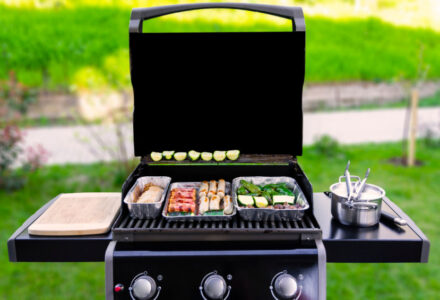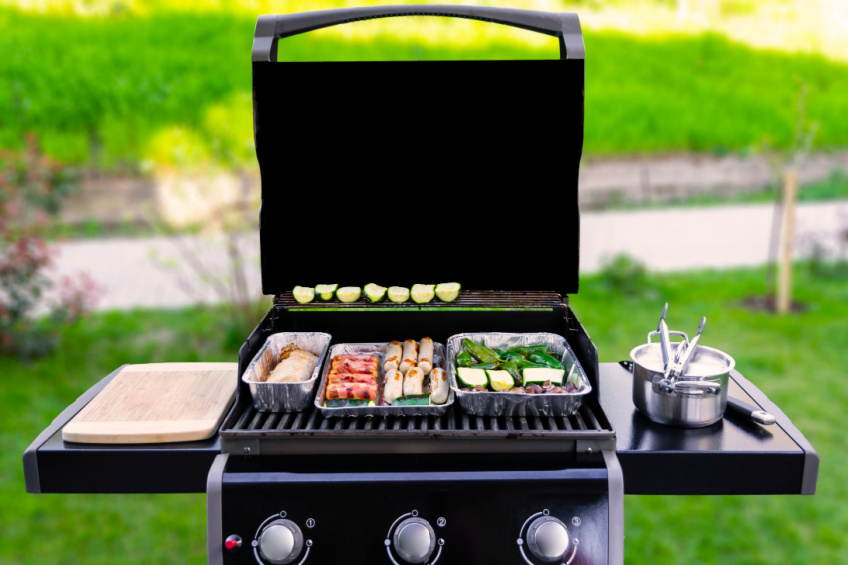 When it comes to grilling, having the right equipment can make all the difference in the world.
When it comes to grilling, having the right equipment can make all the difference in the world.
One of the most important decisions a grill master will make is whether to get a 2-burner or 3-burner grill.
Both options have their pros and cons, and choosing the right one for your needs can be a challenge.
A 2-burner grill is generally smaller and more compact than a 3-burner grill, making it a great option for those with limited space.
It is also typically less expensive than its larger counterpart.
However, a 2-burner grill may not be as powerful as a 3-burner grill, which could impact the cooking time and overall quality of the food.
Additionally, if you often cook for larger groups, a 2-burner grill may not have enough space to accommodate all the food at once.
Ultimately, the decision between a 2-burner and 3-burner grill will depend on a variety of factors, including the amount of space you have available, how often you grill, and the size of your typical grilling parties.
By weighing the pros and cons of each option, you can make an informed decision that will help you create delicious meals for years to come.
Understanding Grill Sizes
When deciding between a 2-burner and a 3-burner grill, one of the most important considerations is the size of the grill.
Understanding the size of the grill can help you determine if it will fit in your space and if it has enough capacity to meet your needs.
Space Considerations
The size of the grill is important to consider if you have limited space.
A 2-burner grill is generally smaller than a 3-burner grill, which can make it a better choice for those with limited outdoor space.
However, it’s important to measure the area where you plan to place the grill to ensure it will fit comfortably.
Grill Capacity
Grill capacity is another important factor to consider when deciding between a 2-burner and a 3-burner grill.
A 3-burner grill typically has a larger cooking surface, which can be beneficial if you plan to cook for a larger group of people.
However, a 2-burner grill can still provide ample cooking space for smaller gatherings.
It’s also important to consider the BTU output of the grill, which is a measure of the grill’s heat output.
A 3-burner grill may have a higher BTU output than a 2-burner grill, which can help it heat up faster and cook food more quickly.
However, a higher BTU output doesn’t necessarily mean better cooking performance, as other factors such as grill construction and design can also impact the quality of the food.
Overall, understanding the size and capacity of the grill can help you make an informed decision when choosing between a 2-burner and 3-burner grill.
Consider your space limitations and the size of your typical gatherings to determine which option is best for you.
Heat Distribution and Control
 When it comes to grilling, heat distribution and control are crucial factors to consider.
When it comes to grilling, heat distribution and control are crucial factors to consider.
Both 2-burner and 3-burner grills offer different levels of heat distribution and control.
Even Cooking
A 3-burner grill generally provides more even cooking than a 2-burner grill.
With an extra burner, the heat is distributed more evenly across the cooking surface, reducing the chances of hot spots and ensuring that food is cooked evenly.
This is particularly important when cooking larger cuts of meat or when grilling for a large group of people.
However, it’s important to note that even cooking also depends on the quality of the grill and the placement of the burners.
A high-quality 2-burner grill with well-placed burners can also provide even cooking.
Temperature Management
Temperature management is another important factor to consider when choosing between a 2-burner and 3-burner grill.
With more burners, a 3-burner grill provides better temperature control, allowing you to adjust the heat in different areas of the grill.
This is particularly useful when cooking different types of food that require different heat levels.
On the other hand, a 2-burner grill can still provide good temperature management if it has high-quality burners and a well-designed heat distribution system.
It’s also worth noting that some 2-burner grills come with features such as side burners or warming racks that can provide additional cooking space and temperature control.
In conclusion, both 2-burner and 3-burner grills have their advantages when it comes to heat distribution and control. It ultimately comes down to personal preference and the specific needs of the user.
Grill Features and Accessories
Additional Features
When it comes to additional features, both 2-burner and 3-burner grills offer a variety of options.
Some of the most common additional features include side burners, rotisserie attachments, and built-in thermometers.
Side burners can be useful for cooking side dishes or sauces while grilling, while rotisserie attachments allow for even cooking of larger cuts of meat.
Built-in thermometers can help ensure that the grill is at the correct temperature for cooking, which is especially important when grilling meats.
In general, 3-burner grills tend to offer more additional features than 2-burner grills.
This is because they have more space to accommodate these features.
However, it’s important to keep in mind that additional features can also add to the overall cost of the grill.
Accessory Compatibility
Another important factor to consider when choosing between a 2-burner and 3-burner grill is accessory compatibility.
Many grill manufacturers offer a variety of accessories, such as griddles, pizza stones, and smoker boxes, that can enhance the grilling experience.
When choosing a grill, it’s important to consider whether the accessories you want are compatible with the grill you’re considering.
Some manufacturers offer a wider variety of accessories for their 3-burner grills than their 2-burner grills.
It’s also important to keep in mind that not all accessories are necessary or useful for every grilling situation.
Consider your own grilling needs and preferences when deciding which accessories to purchase.
Fuel Efficiency and Consumption
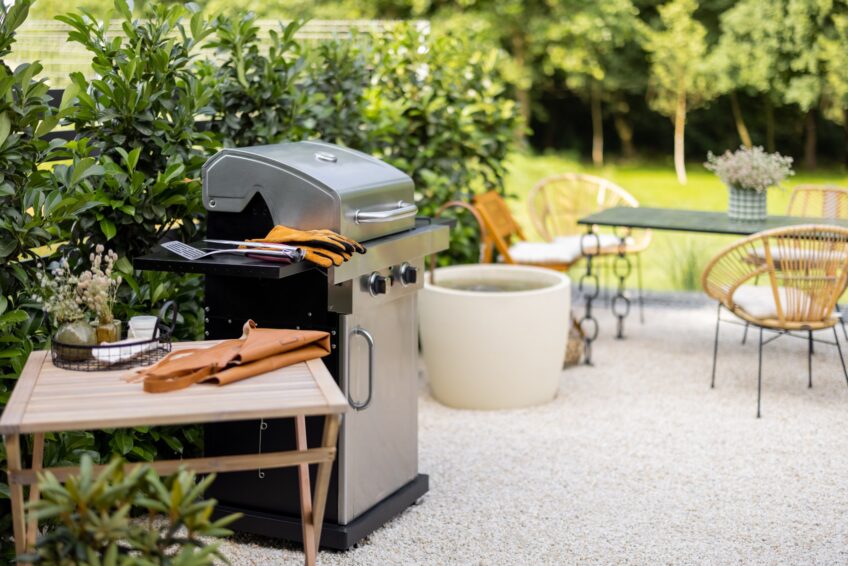
Propane Usage
When it comes to propane usage, a 2-burner grill typically uses less propane than a 3-burner grill.
This is because a 3-burner grill has a larger cooking area and requires more heat to maintain a consistent temperature.
However, this also means that a 3-burner grill can cook more food at once, which may be more efficient in terms of time and effort.
It’s important to note that the amount of propane used also depends on other factors such as the size of the propane tank, the cooking temperature, and the frequency of use.
In general, a 20-pound propane tank can last for about 18-20 hours of grilling on a 2-burner grill and about 12-15 hours on a 3-burner grill.
Energy Saving Tips
To maximize fuel efficiency and reduce propane consumption, there are a few energy-saving tips that can be followed:
- Preheat the grill for 10-15 minutes before cooking to reduce cooking time and propane usage.
- Use a grill cover to trap heat and reduce the amount of propane needed to maintain a consistent temperature.
- Clean the grill regularly to prevent grease buildup, which can cause flare-ups and waste propane.
- Use a meat thermometer to ensure that food is cooked to the desired temperature, which can reduce the need for additional cooking time and propane usage.
Ultimately, the decision between a 2-burner or 3-burner grill comes down to personal preference and needs.
If fuel efficiency is a top priority, a 2-burner grill may be the better option.
However, if cooking for larger groups or hosting frequent backyard parties is a priority, a 3-burner grill may be more efficient in terms of time and effort.
Design and Build Quality
When it comes to choosing between a 2-burner or 3-burner grill, one of the most important factors to consider is the design and build quality of the grill.
A well-designed and well-built grill will not only last longer but will also provide a better grilling experience.
Material Durability
The material used in the construction of the grill plays a crucial role in its durability.
Stainless steel is one of the most popular materials used in the construction of grills due to its durability and resistance to rust and corrosion.
However, not all stainless steel is created equal, and the thickness of the steel used in the construction of the grill can also impact its durability.
Another important factor to consider is the material used in the grates.
Cast iron grates are known for their durability and ability to retain heat, while stainless steel grates are easier to clean and maintain.
Construction Standards
The construction standards of the grill are also important to consider.
Look for grills that are built with high-quality materials and have a solid construction.
Welded seams and joints are preferable to bolts and screws, as they provide a stronger and more stable construction.
It’s also important to consider the design of the grill.
Look for grills with a sturdy base and legs that are designed to provide stability and support.
A grill with a well-designed hood and ventilation system will also help to ensure that the heat is evenly distributed and that the food is cooked to perfection.
Overall, when choosing between a 2-burner or 3-burner grill, it’s important to consider the design and build quality of the grill.
Look for a grill that is built with high-quality materials and has a solid construction to ensure that it provides a great grilling experience for years to come.
Price Comparison and Budgeting
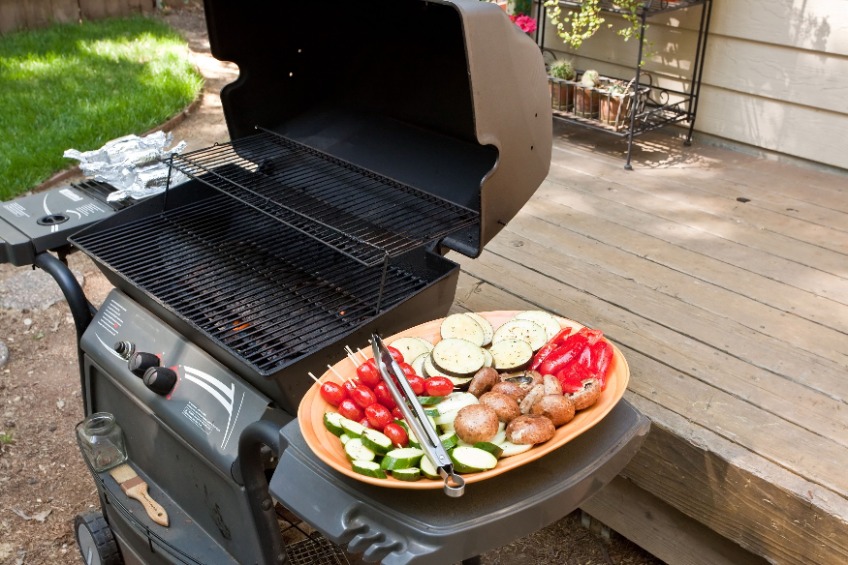
When considering whether to purchase a 2-burner or 3-burner grill, price is an important factor to consider.
In this section, we will compare the affordability and long-term value of both options.
Affordability
Generally, 2-burner grills are less expensive than their 3-burner counterparts.
This is because they have fewer burners and therefore require less material to manufacture.
However, the price difference between the two options can vary depending on the brand, features, and materials used.
It is important to note that while a 2-burner grill may be more affordable initially, it may not be the most cost-effective option in the long run.
This is because a larger grill with more burners may be more efficient in terms of fuel usage and cooking capacity, which can save money over time.
Long-Term Value
When budgeting for a grill purchase, it is important to consider the long-term value of the investment.
A 3-burner grill may have a higher initial cost, but it may also provide more value over time.
For example, a 3-burner grill may have more cooking space, which can be useful for entertaining large groups or cooking multiple dishes at once.
Additionally, a larger grill may have more features, such as a built-in thermometer or side burners, which can enhance the cooking experience.
Ultimately, the decision between a 2-burner and 3-burner grill will depend on the individual’s budget and cooking needs.
It is important to carefully consider the initial cost and long-term value of each option before making a purchase.
Maintenance and Cleaning
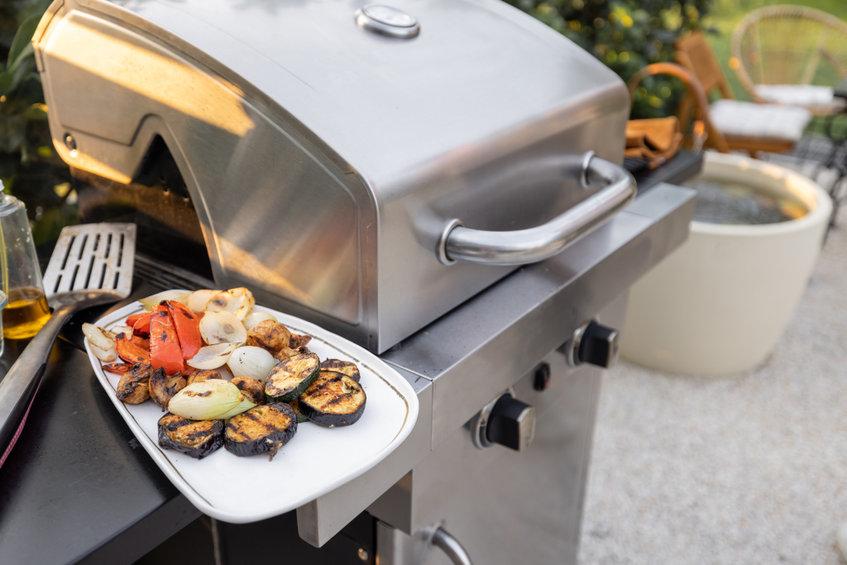
Ease of Cleaning
Cleaning a grill after use is an essential part of maintaining it.
When it comes to cleaning, a 2-burner grill is easier to clean than a 3-burner grill.
This is because a 2-burner grill has fewer parts and a smaller cooking area, making it easier to access all the areas that need cleaning.
A 3-burner grill, on the other hand, has more parts and a larger cooking area, which can make it more challenging to clean.
Both 2-burner and 3-burner grills come with removable grates that can be cleaned separately.
The grates can be cleaned using a grill brush and soap and water.
However, 3-burner grills may have more grates that need to be cleaned, which can be time-consuming.
Maintenance Requirements
Maintaining a grill is essential to ensure it lasts a long time and functions correctly.
Both 2-burner and 3-burner grills require regular maintenance, such as checking for leaks, replacing parts, and cleaning.
However, a 3-burner grill may require more maintenance than a 2-burner grill.
This is because a 3-burner grill has more parts, such as burners, that may need to be replaced over time.
Additionally, a 3-burner grill may have more complex features, such as a rotisserie or smoker box, which may require additional maintenance.
In conclusion, when it comes to maintenance and cleaning, a 2-burner grill is easier to clean and may require less maintenance than a 3-burner grill.
However, both types of grills require regular maintenance to ensure they function correctly and last a long time.
Making the Decision
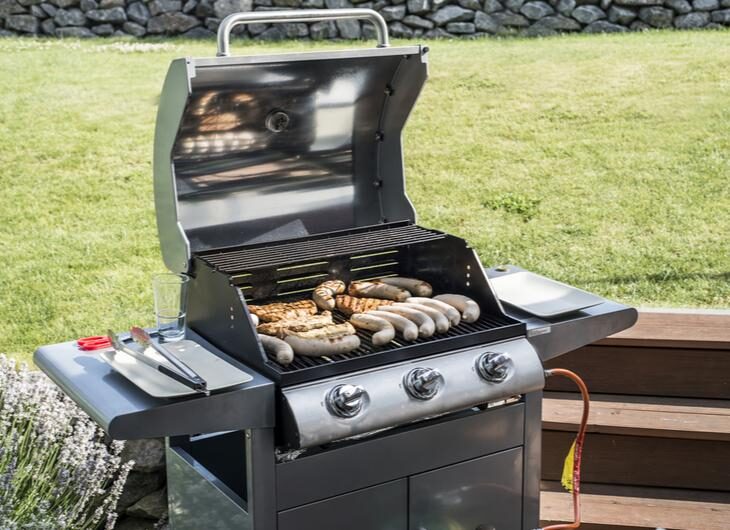 When it comes to choosing between a 2-burner and a 3-burner grill, there are a few factors to consider.
When it comes to choosing between a 2-burner and a 3-burner grill, there are a few factors to consider.
Here are some things to keep in mind when making your decision.
Lifestyle and Usage
One of the main things to consider is your lifestyle and how often you plan on using your grill.
If you’re someone who only grills occasionally for small gatherings or for your family, a 2-burner grill may be sufficient.
However, if you regularly host larger gatherings or plan on using your grill frequently, a 3-burner grill may be a better choice.
Another thing to consider is the types of food you plan on grilling.
If you’re someone who primarily grills burgers, hot dogs, and other small items, a 2-burner grill may be all you need.
However, if you plan on grilling larger items like whole chickens or roasts, a 3-burner grill may be necessary to ensure even cooking.
Some Good Recommendations of 2 and 3-Burner Grills
- Weber Spirit II E-210 2-Burner Grill
The Spirit II E-210 is a popular 2-burner liquid propane grill that offers a range of features and benefits for grill enthusiasts.
- Napoleon Rogue 365 2-Burner Grill With Side Burner
The Rogue is a high-quality propane gas grill that offers a range of features and benefits for grill enthusiasts.
- Monument Grills Larger 3-Burner Grill
The Monument is a powerful and versatile grill that offers a range of features and benefits for grill enthusiasts.
Bottom Line – Making the Right Choice for Your Grilling Needs
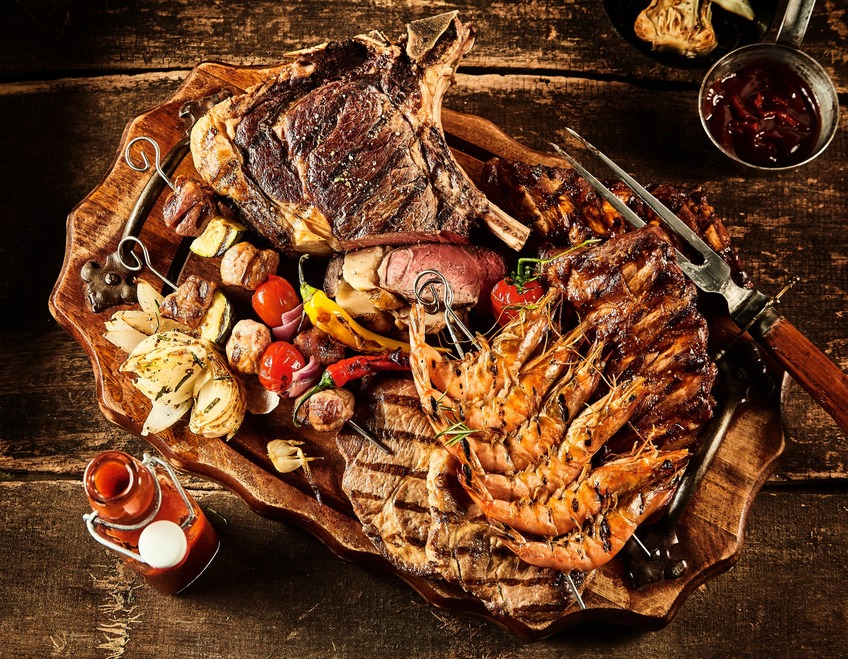 Choosing the right grill is an important decision for any grill enthusiast.
Choosing the right grill is an important decision for any grill enthusiast.
When deciding between a 2-burner and a 3-burner grill, it’s important to consider factors such as size, cooking power, and features.
A 2-burner grill is ideal for smaller families or those with limited space, while a 3-burner grill provides more cooking power and a larger cooking area, making it a better option for larger families or those who frequently entertain guests.
Other features to consider when choosing a grill include the type of ignition system, cooking grates, side shelves, built-in thermometer, and warranty.
It’s also important to consider your budget when choosing a grill, as prices can vary widely depending on the size and features of the grill.
Ultimately, the right choice for your grilling needs will depend on your personal preferences and requirements.
By carefully considering all of the factors and options available, you can choose the grill that’s best suited to your needs and enjoy delicious grilled meals for years to come.

